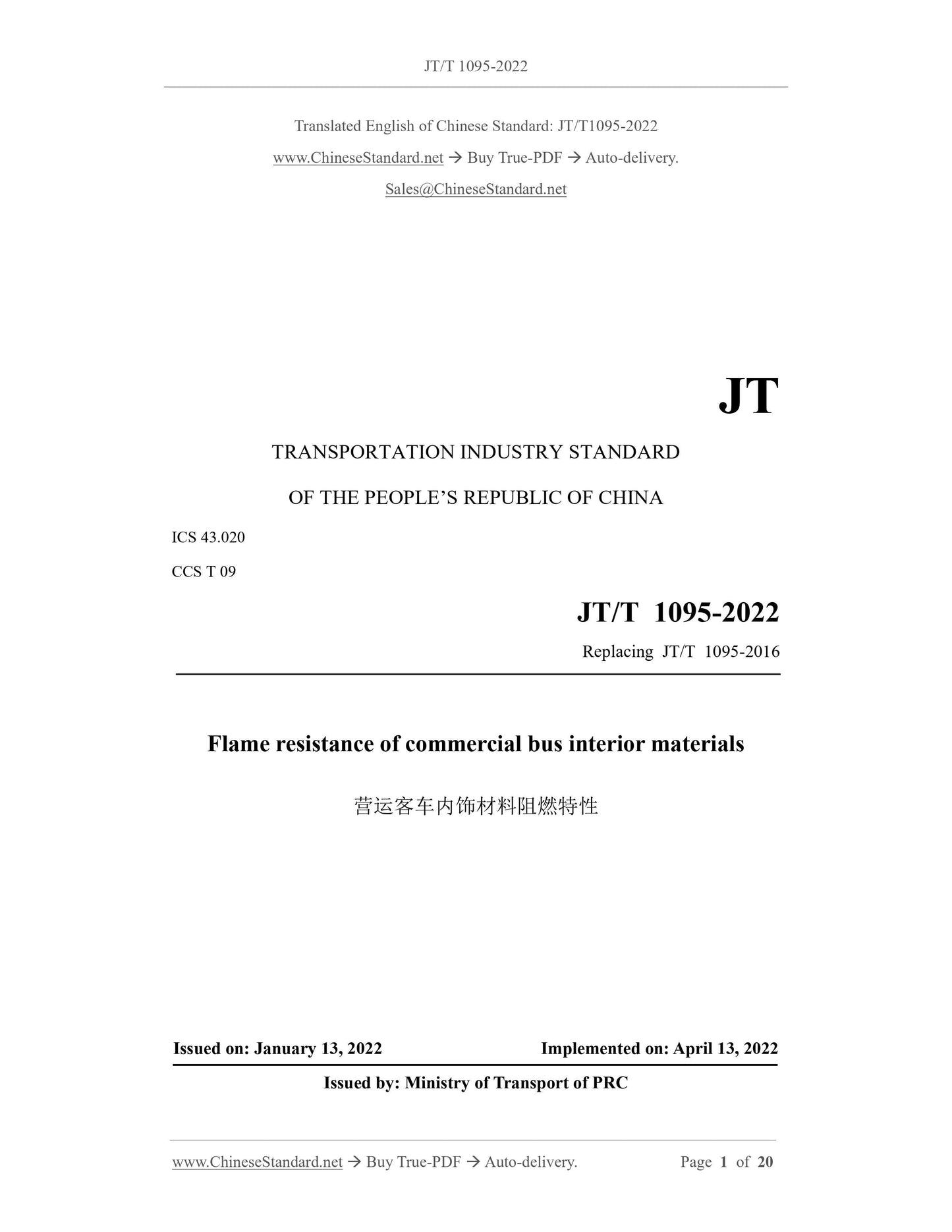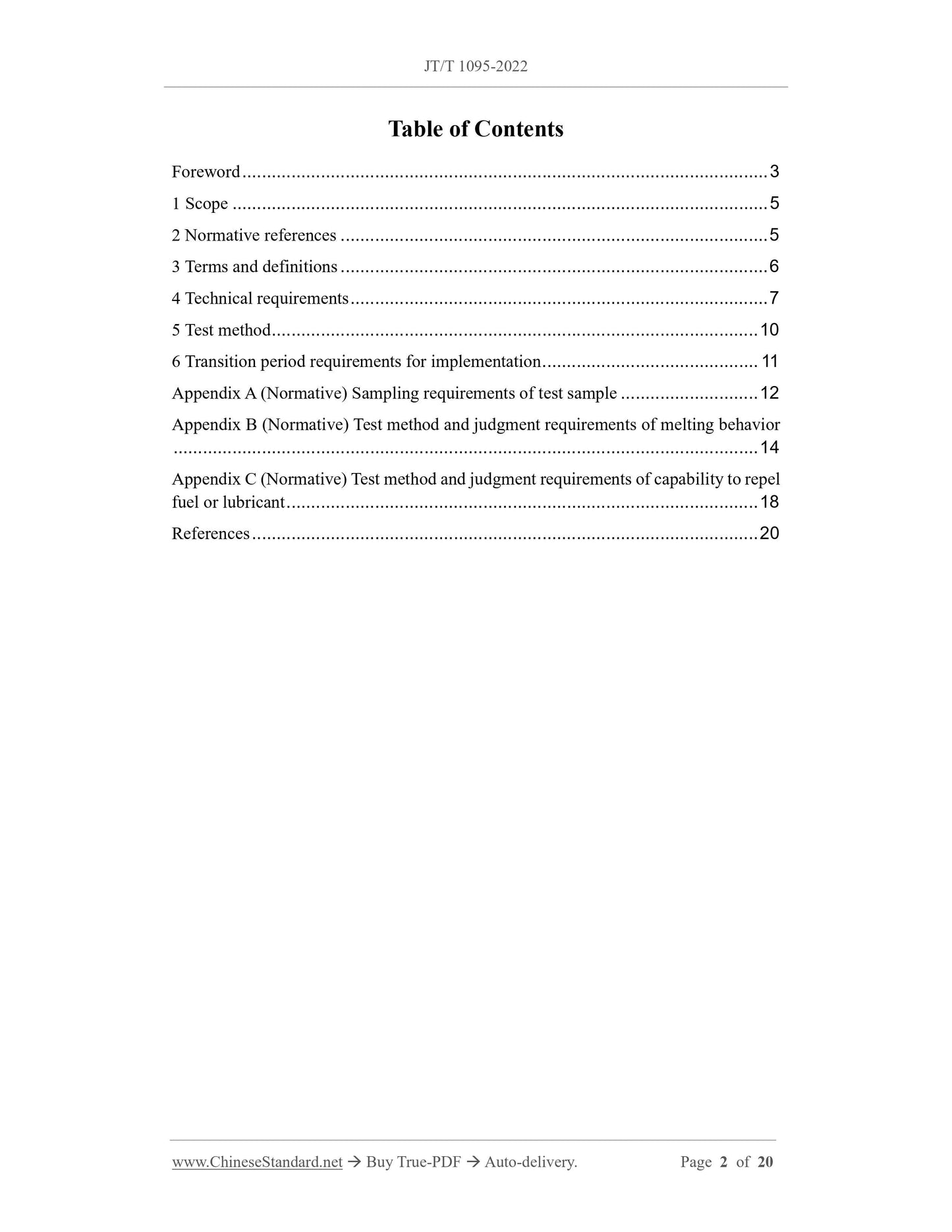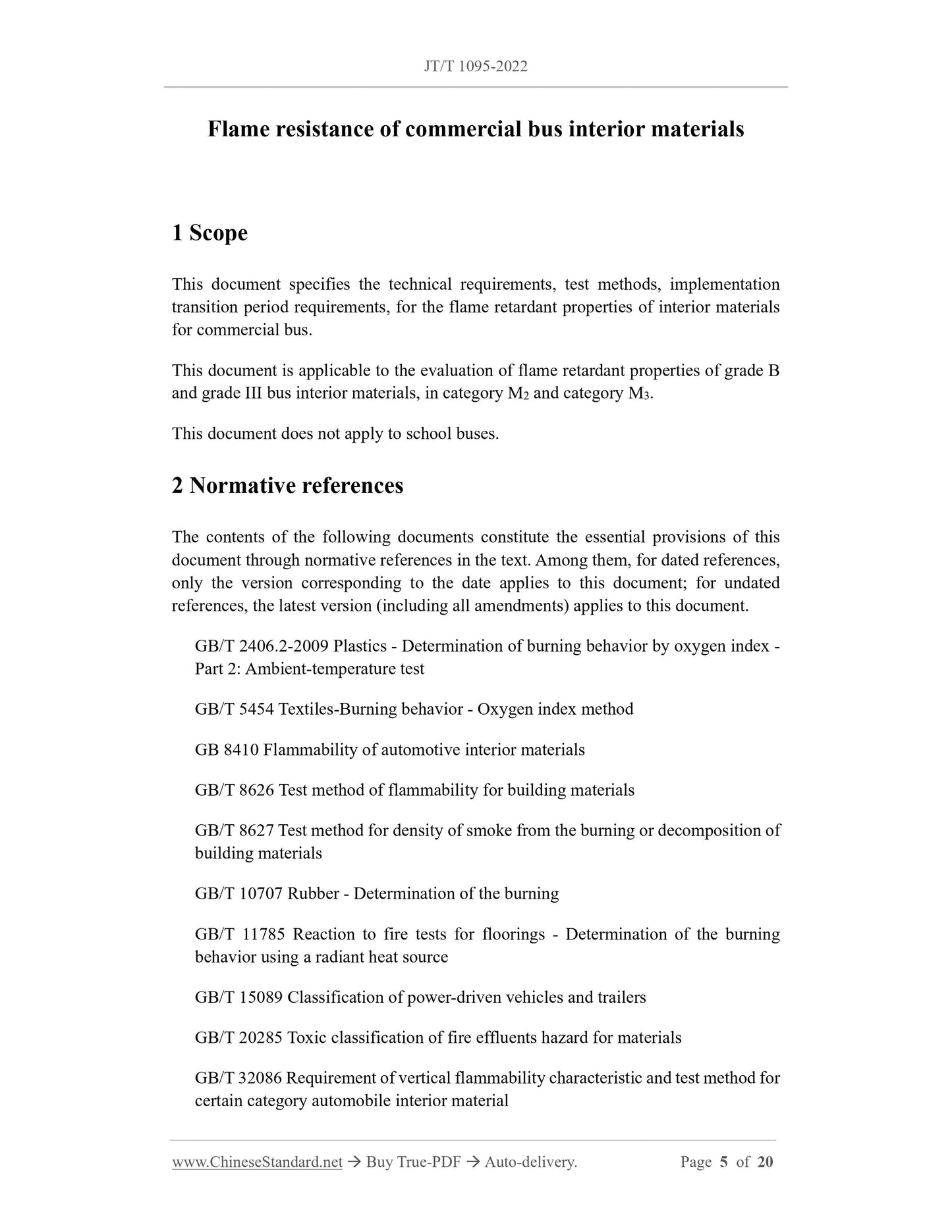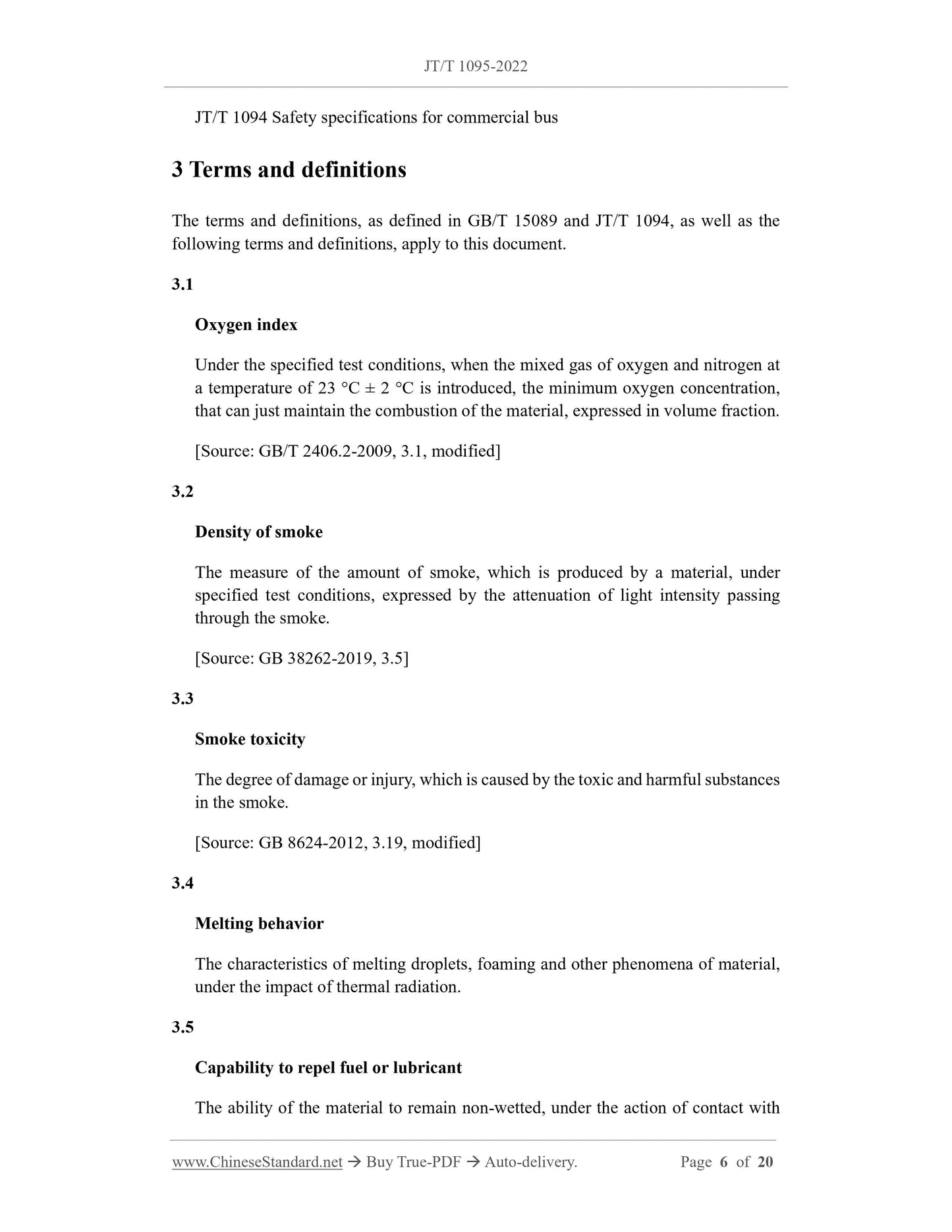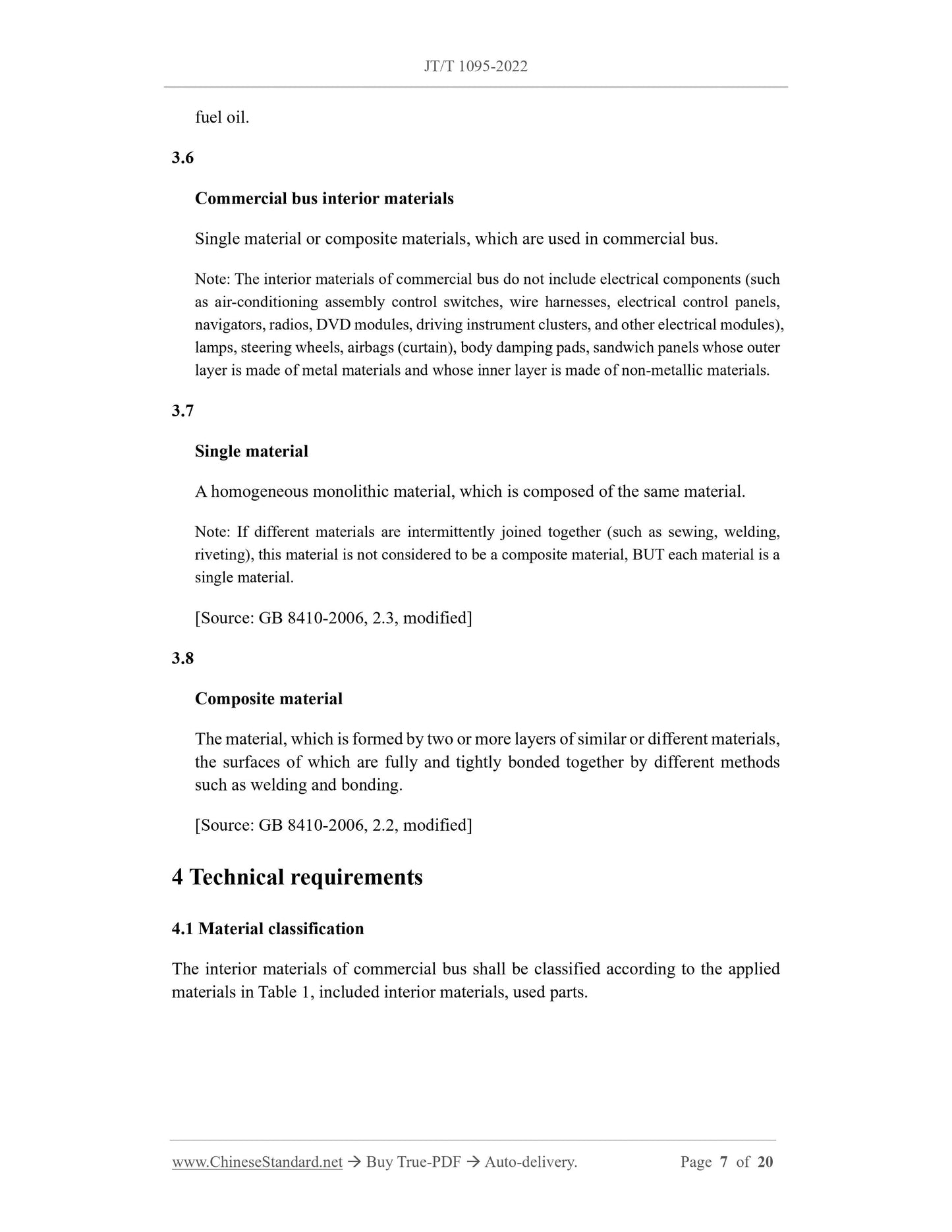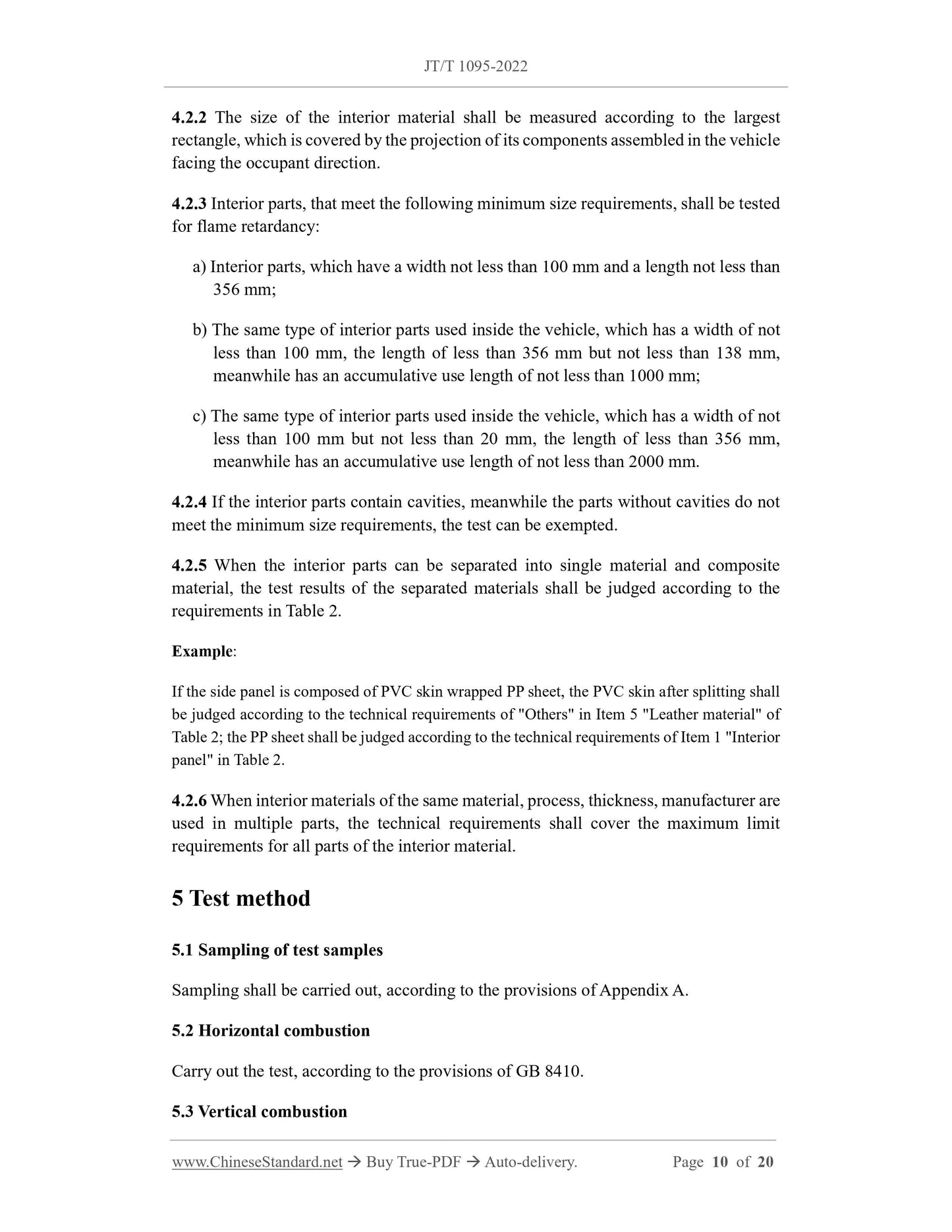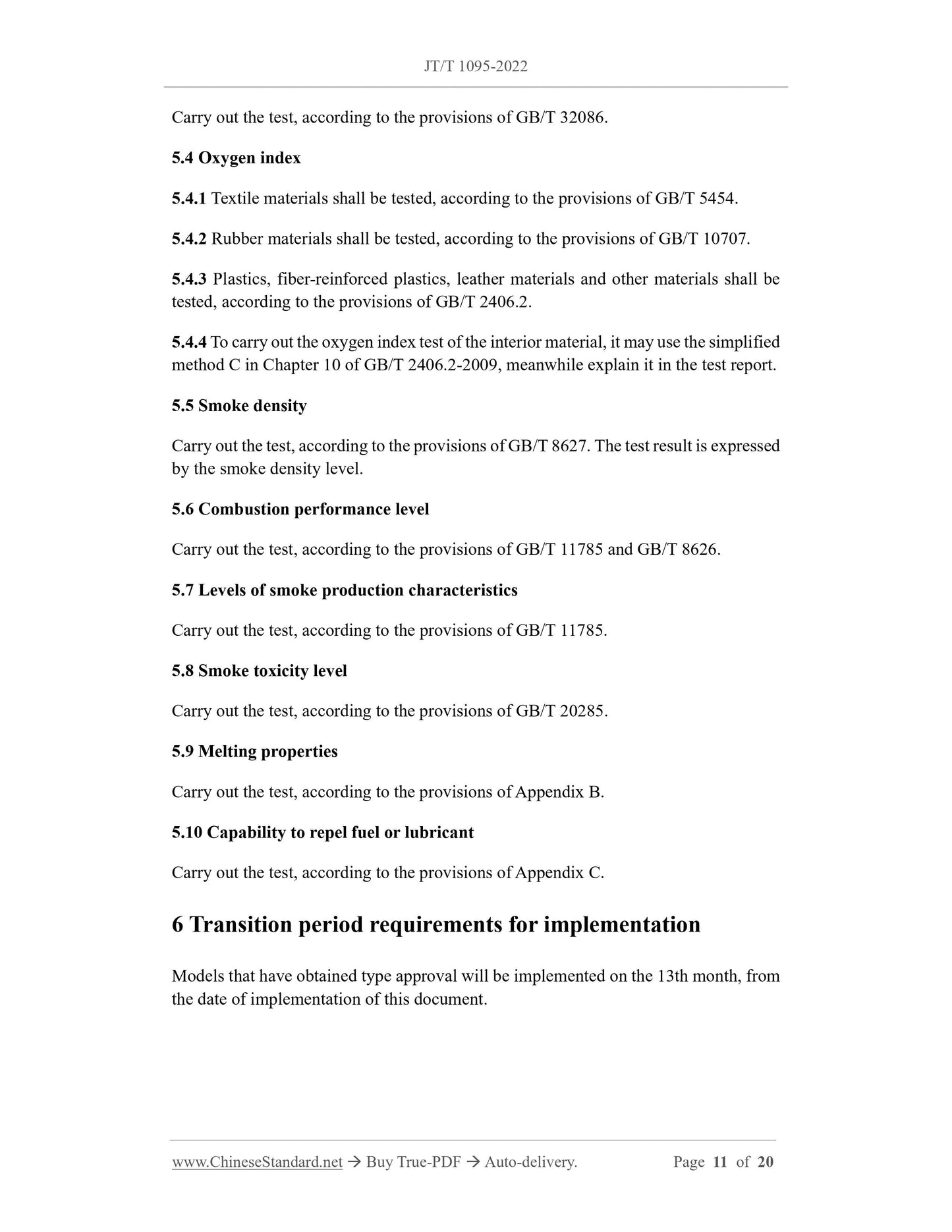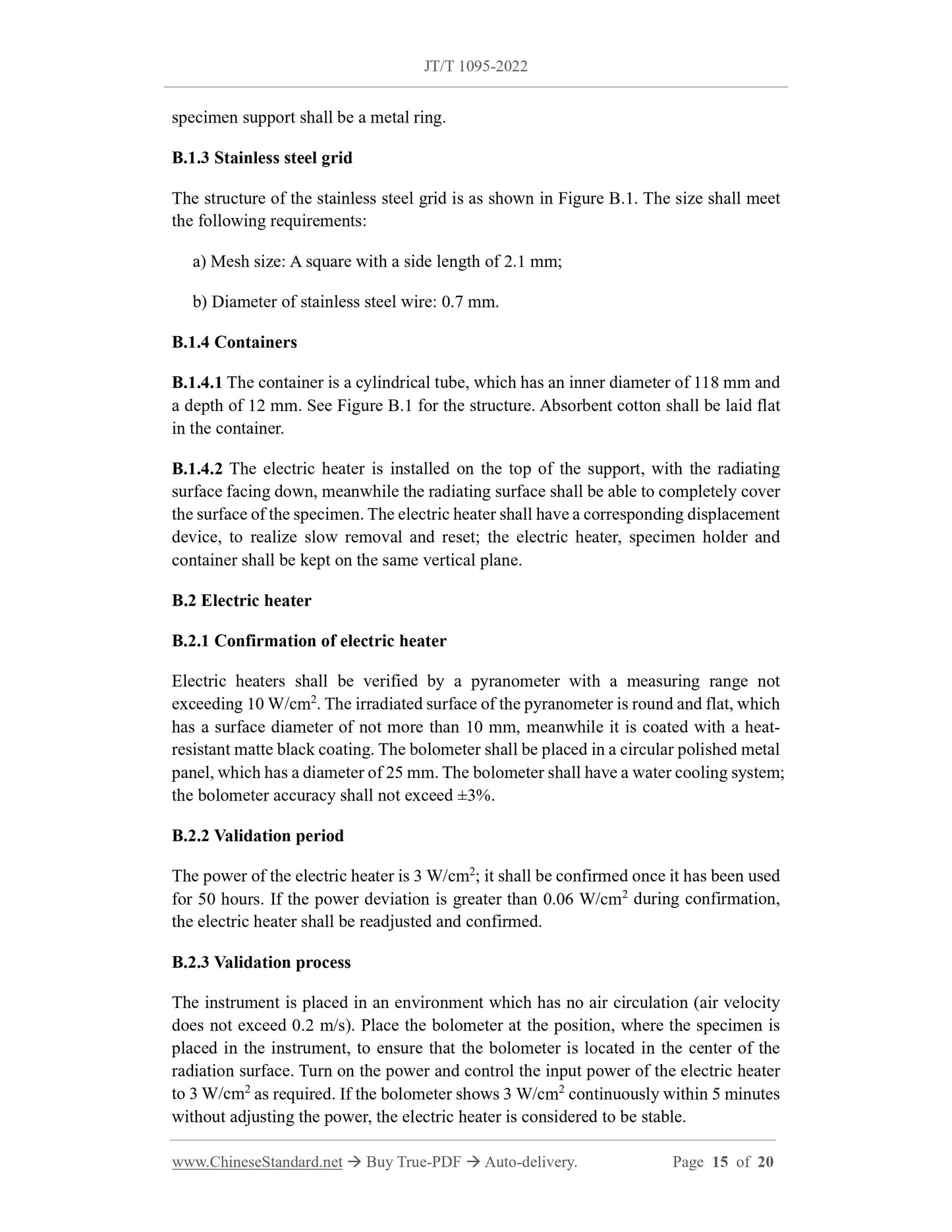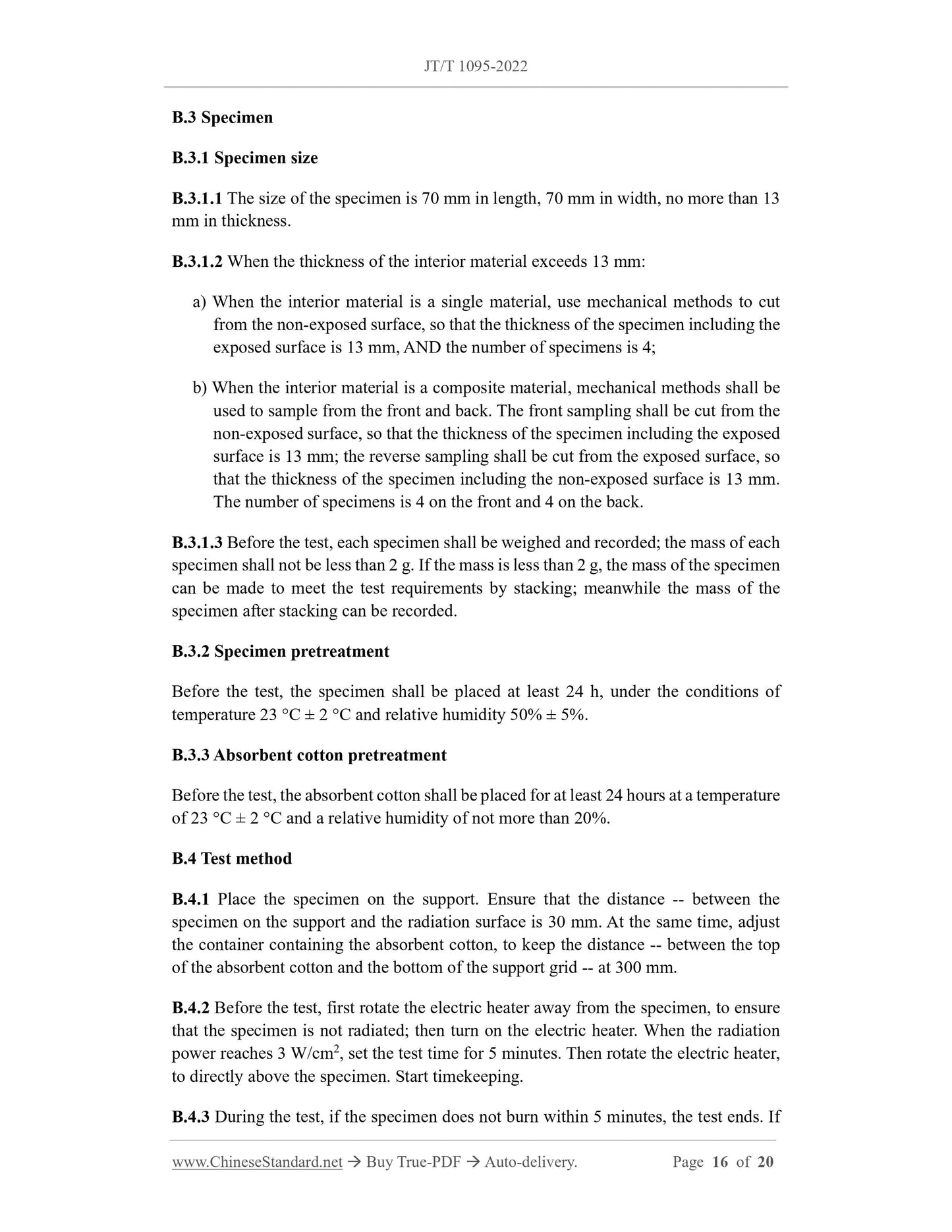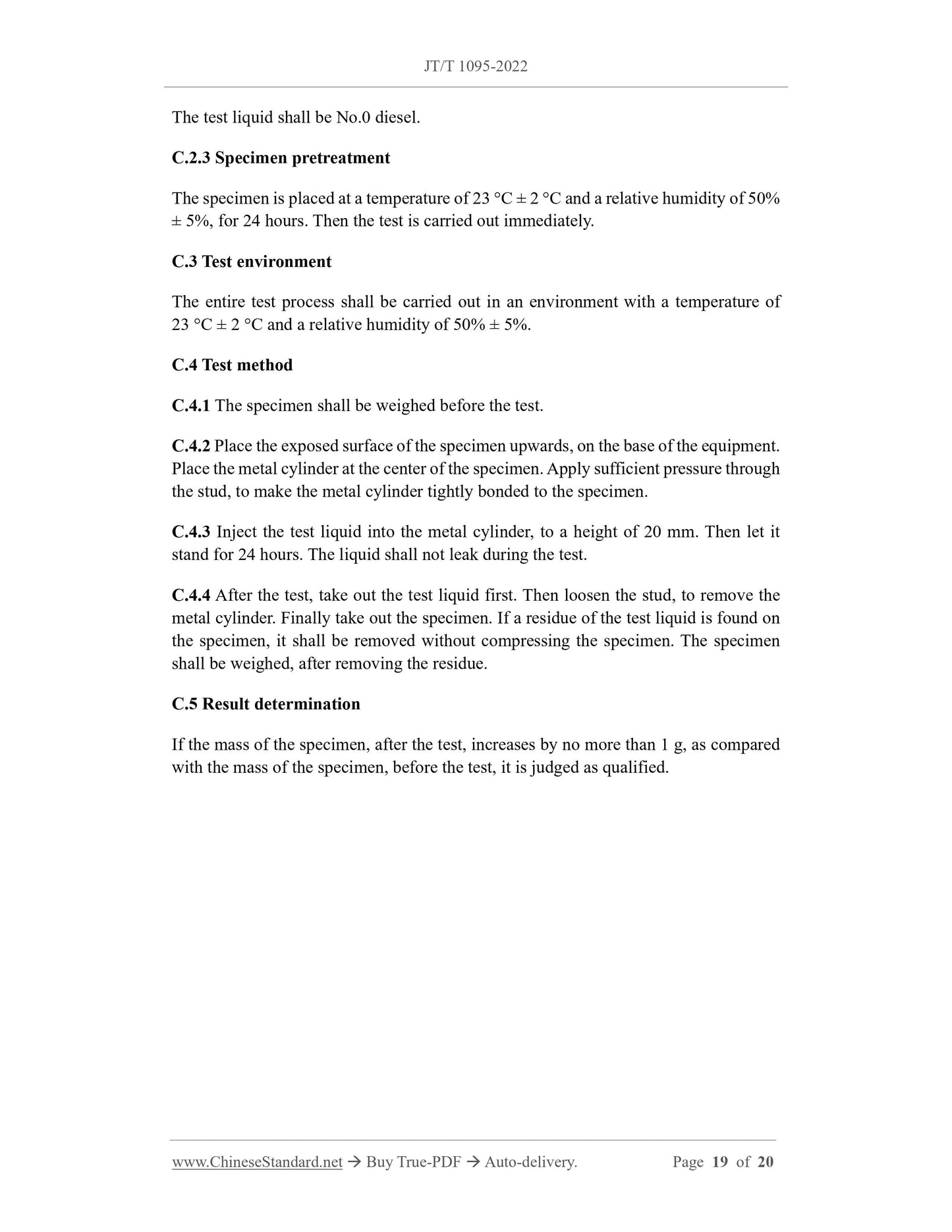1
/
of
10
www.ChineseStandard.us -- Field Test Asia Pte. Ltd.
JT/T 1095-2022 English PDF (JT/T1095-2022)
JT/T 1095-2022 English PDF (JT/T1095-2022)
Regular price
$245.00
Regular price
Sale price
$245.00
Unit price
/
per
Shipping calculated at checkout.
Couldn't load pickup availability
JT/T 1095-2022: Flame resistance of commercial bus interior materials
Delivery: 9 seconds. Download (and Email) true-PDF + Invoice.Get Quotation: Click JT/T 1095-2022 (Self-service in 1-minute)
Newer / historical versions: JT/T 1095-2022
Preview True-PDF
Scope
This document specifies the technical requirements, test methods, implementationtransition period requirements, for the flame retardant properties of interior materials
for commercial bus.
This document is applicable to the evaluation of flame retardant properties of grade B
and grade III bus interior materials, in category M2 and category M3.
This document does not apply to school buses.
Basic Data
| Standard ID | JT/T 1095-2022 (JT/T1095-2022) |
| Description (Translated English) | Flame resistance of commercial bus interior materials |
| Sector / Industry | Highway and Transportation Industry Standard (Recommended) |
| Classification of Chinese Standard | T09 |
| Word Count Estimation | 17,137 |
| Date of Issue | 2022-01-13 |
| Date of Implementation | 2022-04-13 |
| Older Standard (superseded by this standard) | JT/T 1095-2016 |
| Quoted Standard | JT/T 1095-2016 |
| Regulation (derived from) | Ministry of Transport Announcement No. 6 of 2022 |
| Issuing agency(ies) | Ministry of Transport |
| Summary | This standard specifies the technical requirements, test methods and transitional requirements for the flame retardant properties of interior materials for commercial passenger cars. This standard is applicable to the evaluation of the flame retardant properties of the interior materials of Class B and Class III commercial passenger cars in the M2 and M3 categories. This standard does not apply to school buses. |
Share
